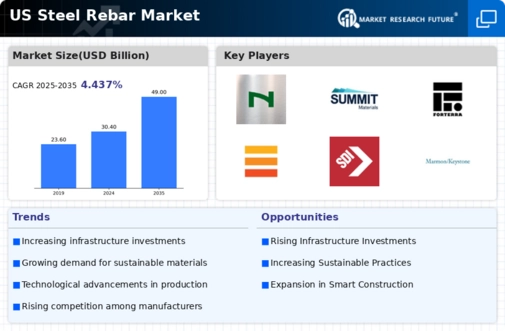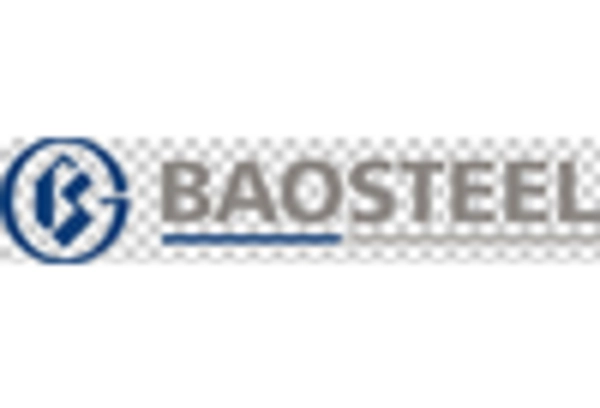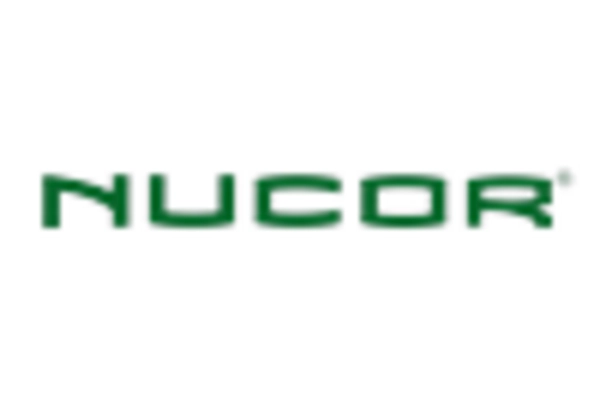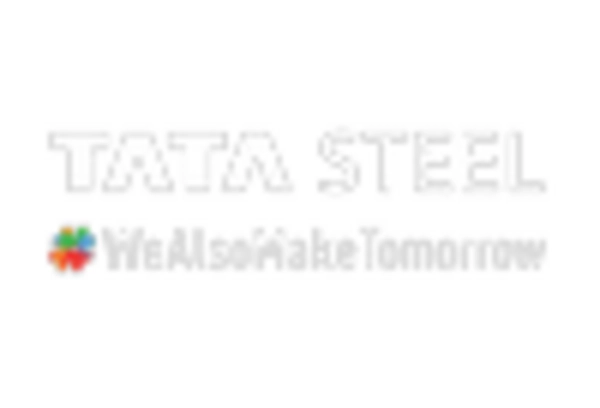The steel rebar market is currently characterized by a competitive landscape that is both dynamic and multifaceted. Key growth drivers include increasing infrastructure investments, particularly in urban development and transportation projects, alongside a rising demand for sustainable construction materials. Major players such as Nucor Corporation (US), ArcelorMittal (LU), and Commercial Metals Company (US) are strategically positioning themselves through innovation and regional expansion. Nucor Corporation (US) focuses on sustainable production methods, leveraging electric arc furnace technology to minimize environmental impact, while ArcelorMittal (LU) emphasizes digital transformation initiatives to enhance operational efficiency. Collectively, these strategies contribute to a competitive environment that is increasingly shaped by technological advancements and sustainability goals.In terms of business tactics, companies are localizing manufacturing to reduce transportation costs and optimize supply chains. The market structure appears moderately fragmented, with several key players exerting influence over pricing and production capabilities. This fragmentation allows for a variety of competitive strategies, as companies seek to differentiate themselves through quality, service, and innovation rather than solely on price.
In October Nucor Corporation (US) announced a significant investment of $300 million to expand its rebar production capacity in the Southeast region. This strategic move is likely to enhance Nucor's market share and improve its ability to meet the growing demand for rebar in construction projects across the region. By increasing production capacity, Nucor positions itself to capitalize on the anticipated infrastructure spending, thereby reinforcing its competitive edge.
In September ArcelorMittal (LU) launched a new line of eco-friendly rebar, which is produced using a higher percentage of recycled materials. This initiative not only aligns with global sustainability trends but also caters to the increasing demand from construction firms seeking greener alternatives. The introduction of this product line may allow ArcelorMittal to attract environmentally conscious clients and differentiate itself in a crowded market.
In August Commercial Metals Company (US) entered into a strategic partnership with a leading technology firm to integrate AI-driven analytics into its production processes. This collaboration aims to enhance operational efficiency and reduce waste, which could lead to significant cost savings. By adopting advanced technologies, Commercial Metals Company is likely to improve its competitive positioning and respond more effectively to market fluctuations.
As of November current competitive trends in the steel rebar market are increasingly defined by digitalization, sustainability, and the integration of advanced technologies such as AI. Strategic alliances are becoming more prevalent, as companies recognize the need to collaborate in order to innovate and enhance supply chain reliability. Looking ahead, competitive differentiation is expected to evolve, with a notable shift from price-based competition towards a focus on innovation, technology adoption, and sustainable practices. This transition may redefine the competitive landscape, compelling companies to invest in research and development to maintain their market positions.
















